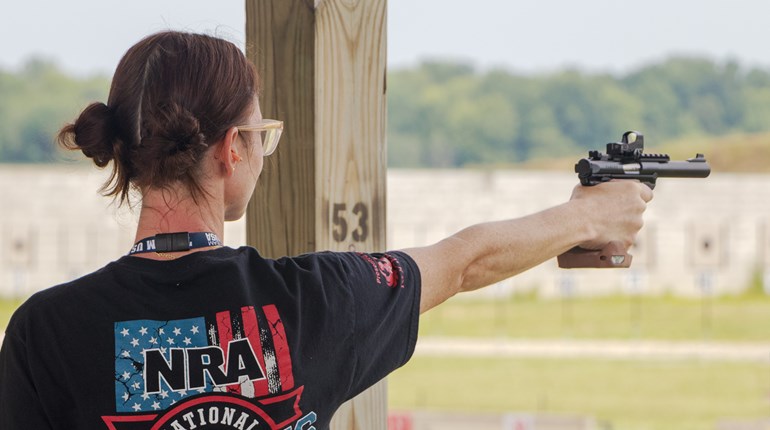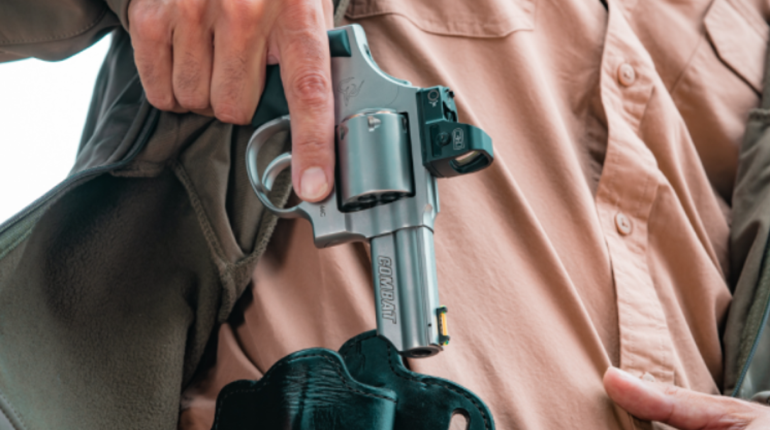
In dealing with a criminal threat, our eyes are focused on the threat as we bring the gun up into our line of sight. Since we can't focus our vision on three things at once—the rear sight, the front sight, and the threat—we focus on the front sight. We see the rear sight, we see the threat, but we focus on the front sight in the instant we break our shot. This technique has proven very effective, time and again, in actual gunfights and provides adequate accuracy for close-range encounters.
With the emphasis being placed on the front sight, it is often very helpful to have something on the front sight that draws our attention. I like a gold dot on my front sight, such as that offered by Novak Sights. However, I also find that big white dot XS Sight Systems puts on its product to be just as good. Colored fiber-optic front sights are also quick to pick up, but they are a bit fragile.
The need to quickly pick up the front sight makes a plain black rear sight a good choice. In fact, the poorest choices for defensive sights are the three-dot versions that have become popular in the recent past. Your eye sees three dots, and then has to decide which one to focus on. That, my friends, takes time and time is the one thing that you can't afford to waste in dealing with a close-range criminal attack.
The flash sight picture is critical to dealing with close-range encounters because the front sight can be quickly indexed on the criminal's vital zone as you break your shot. Beyond about 21 feet, the defensive shooter may want to pay more attention to the alignment of his front and rear sight in order to deliver a more accurate shot. The exact distance will be determined through individual practice.
Ignoring this important technique leads to misses—both on the range and in a defensive encounter. So, learn the flash sight picture, and practice achieving it as often as you can.





































